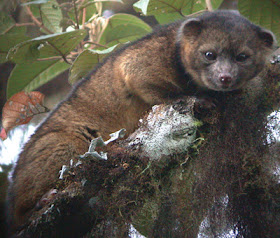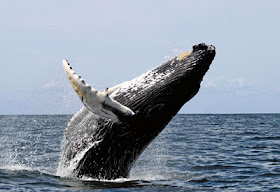 |
| Megatherium |
The Pleistocene in North America can be divided into three 'land mammal stages', defined by the kinds of animal that inhabited the continent. The first, which was only
recently added to the Pleistocene, is the one that comes before the Ice Ages proper, so that the Ice Ages themselves are, as I mentioned in
part 8, divided into just two. As I said back then, the first of these starts with the arrival, not only of the ice, but also of the first American mammoths. The second, called the Rancholabrean after the famous tar pits, is much shorter, and essentially refers only to exceptionally bitter cold of the Last Ice Age. In terms of animal life, though, it is defined by the arrival of bison.
Today, when we think of America before the white man arrived, vast herds of bison are often part of our mental picture. And that, on the whole, is pretty much accurate, and is why their first appearance is deemed so significant in the ongoing evolution of North American wildlife. But what was the American wilderness like before there were any bison? What dominated the continent during the earlier, "Irvingtonian", stage?
As always, of course, the most common animals were the smallest. But, important though the teeth of (for example) voles are for the precise dating of geological deposits from this time, the eyes of any time travelling visitor would inevitably have been drawn to much larger animals. Obviously, mammoths and mastodons are a large part of the answer, and the presence of large elephantine animals crossing the plains would have been enough to tell our time traveller that, while he might still be in Kansas, it isn't really the same one he left. But there are many other beasts that would provide just as quick a clue.
Deer, peccaries, and horses are all examples of animals that aren't so unfamiliar today, although in many cases, the exact Pleistocene species were different from those alive now. Horses, for example, had, by this point, evolved to the modern single-toed form, but the last North American native horses died out around 12,000 BC, when the Pleistocene ended, leaving the ancestors of the domesticated forms behind in Asia. Exactly how many species of wild horse there were in America at this time, though, is unclear, with as many as fifty having been named - in my view, it's somewhat unlikely that they're really all distinct. There were, however, at least two broad types, one similar to the modern domestic horse, and the other, the so-called
stilt-legged onager (
Equus francisci, among others), which looked much more like a wild ass.









































